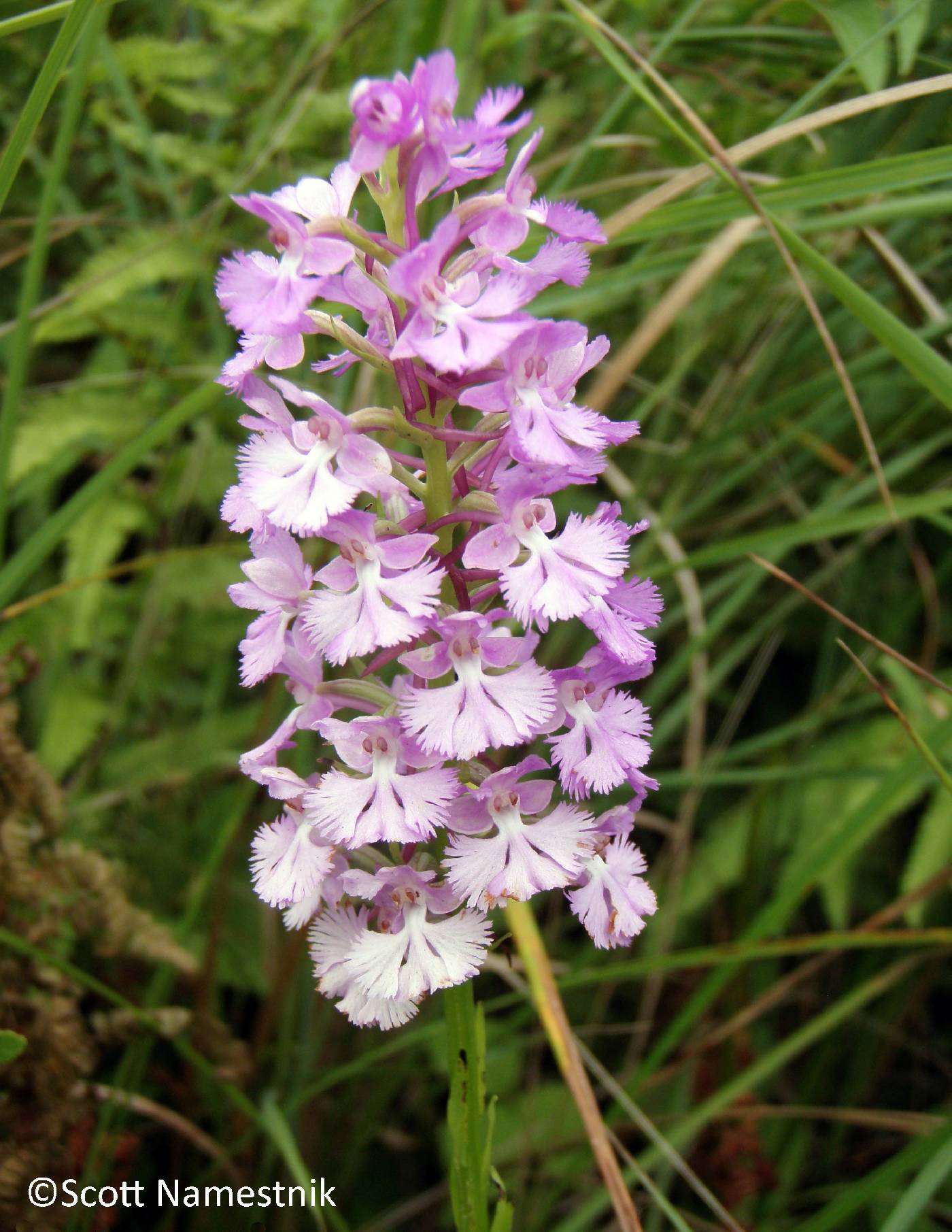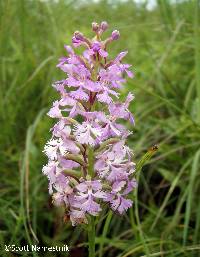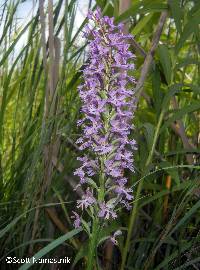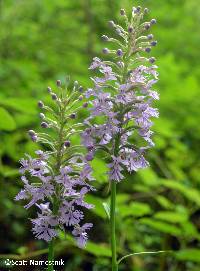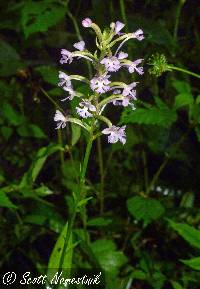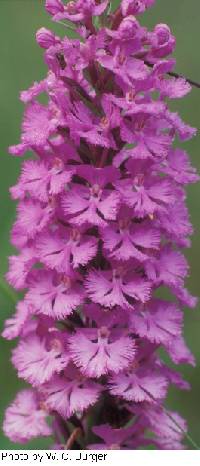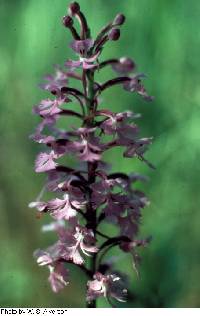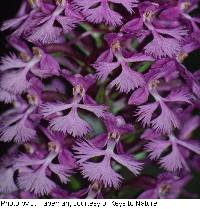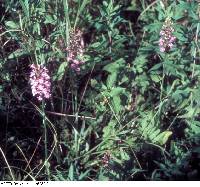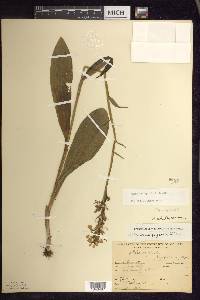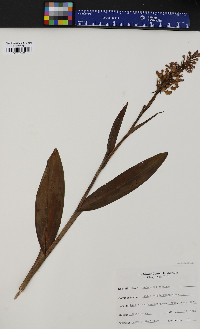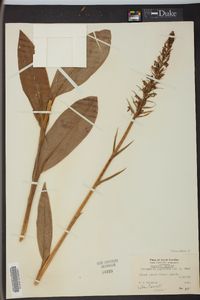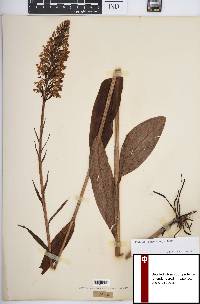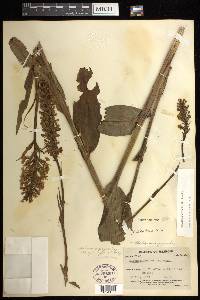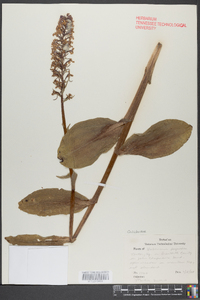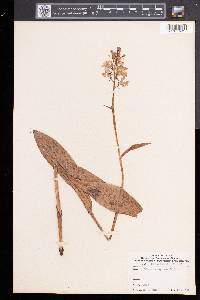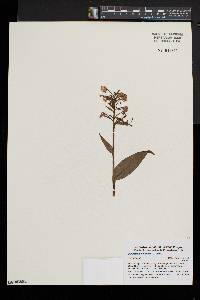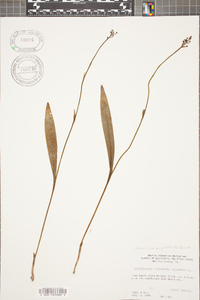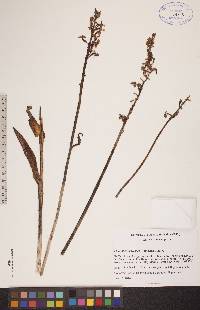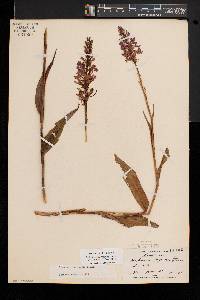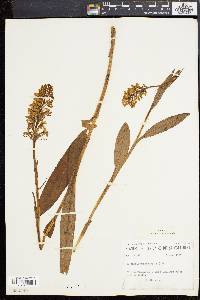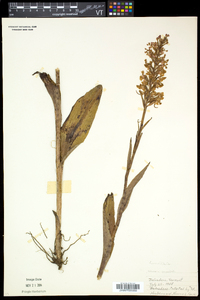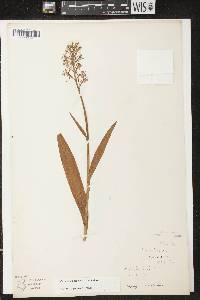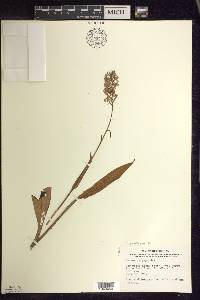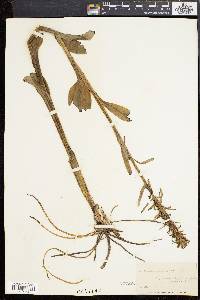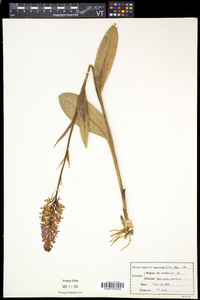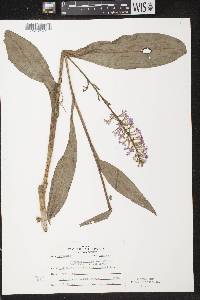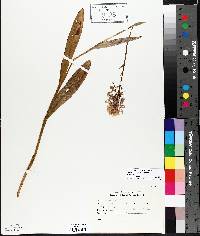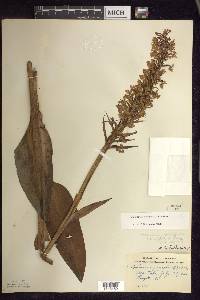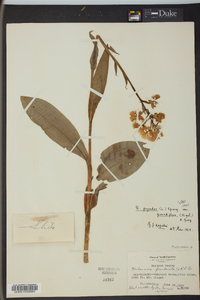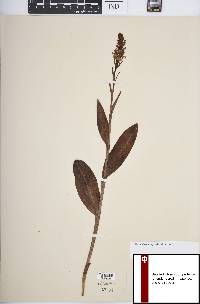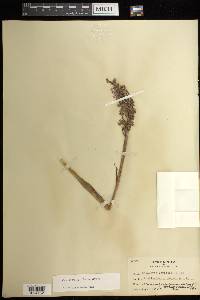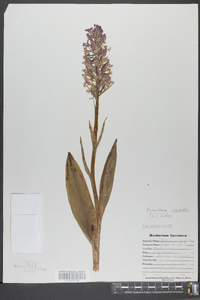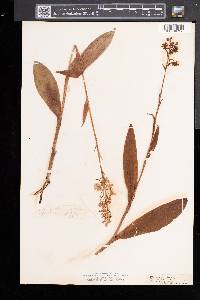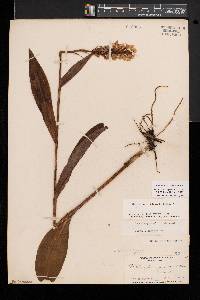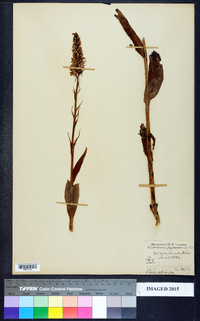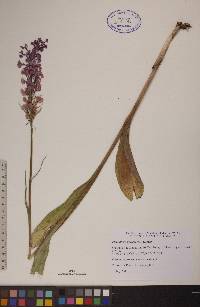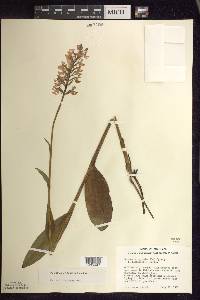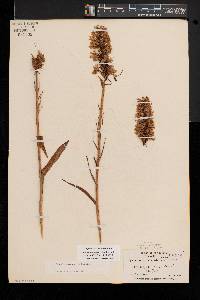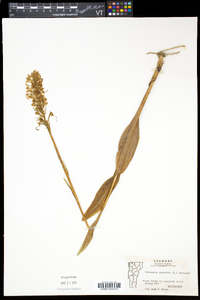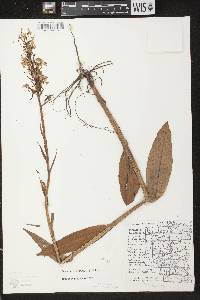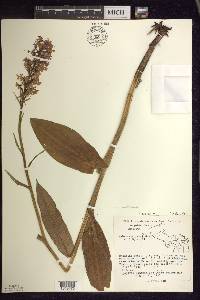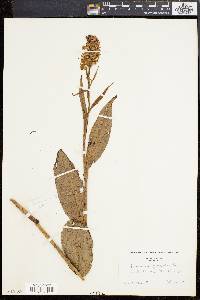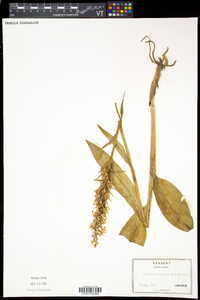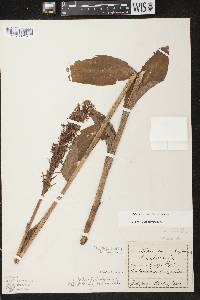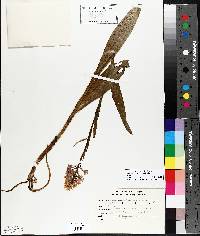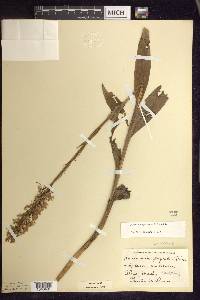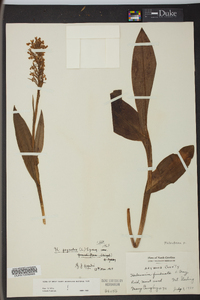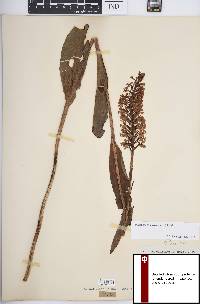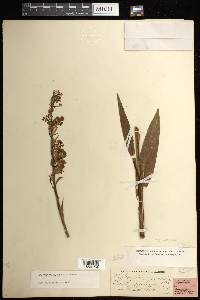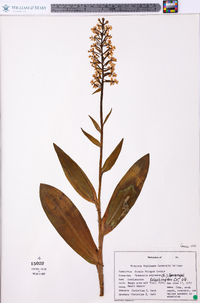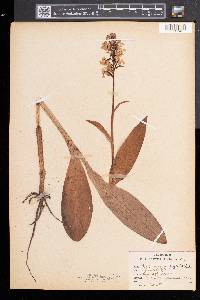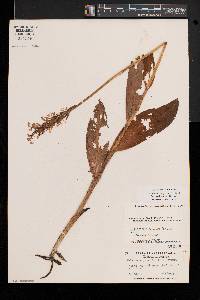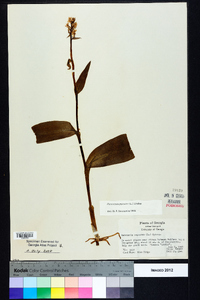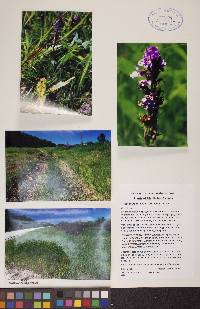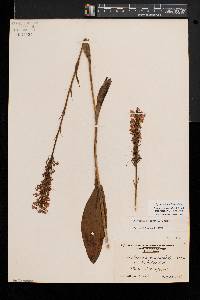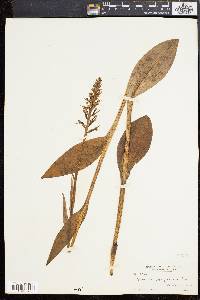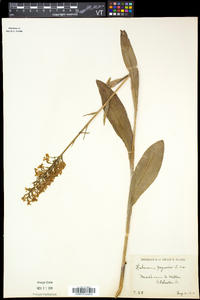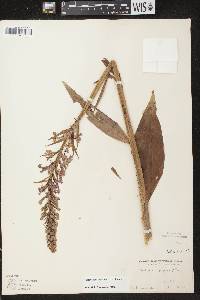Platanthera psycodes
|
|
|
|
Family: Orchidaceae
Lesser Purple Fringed Orchid, more...Pride-of-the-Peak
[Blephariglottis psycodes, moreHabenaria psycodes (L.) Spreng., Habenaria psycodes f. albiflora Ralph Hoffm., Habenaria psycodes var. ecalcarata M.M.Bryan, Habenaria psycodes var. psycodes , Habenaria psycodes var. varians M.M.Bryan, Platanthera fissa (Muhl. ex Willd.) Lindl., Platanthera psychodes (L.) Lindl., Platanthera psycodes f. albiflora (R.Hoffm.) R.E.Whiting & Catling] |
Plants 14-101 cm. Leaves 2-5, wide-spreading, recurved to somewhat ascending, scattered along stem, gradually reduced to bracts distally; blade lanceolate, oblong-elliptic, or oblong-obovate, 5-22 × 1.5-7 cm. Spikes lax to very dense. Flowers resupinate, showy, lavender- to rose-purple, rarely white; lateral sepals reflexed to somewhat spreading; petals spatulate to broadly obovate or cuneate-oblong, margins dentate-lacerate to sparsely fringed; lip descending to somewhat porrect, deeply 3-lobed, without basal thickening, 5-13 × 5-17 mm, distal margins of lobes fringed, sometimes deeply, lateral lobes often reflexed or slightly elevated above middle lobe, broadly to narrowly cuneate, middle lobe sometimes reflexed, broadly cuneate-flabellate, often emarginate to 2-fid; spur slenderly cylindric to slightly clavate, 12-22 mm; rostellum lobes nearly parallel, directed downward, short, rounded; pollinaria nearly straight; pollinia remaining enclosed within anther sacs; viscidia suborbiculate to broadly elliptic; ovary slender to stout, 9-16 mm. 2n = 42. Flowering Jun--Aug(--Sep). Alluvial and swamp forests, stream banks, riparian meadows, moist and seeping slopes, marshes, roadside banks, ditches, old fields; 0--2000 m; Man., N.B., Nfld. and Labr. (Nfld.), N.S., Ont., P.E.I., Que.; Conn., Ga., Ill., Ind., Iowa, Ky., Maine, Mass., Mich., Minn., N.H., N.J., N.Y., N.C., Ohio, Pa., R.I., Tenn., Vt., Va., W.Va., Wis. Platanthera psycodes is known to hybridize with P. lacera in the northeasternmost portion of its range, where the species bloom simultaneously. Such hybrids are known as P. × andrewsii (M. White) Luer; see the discussion under P. lacera. A few specimens also suggest very rare hybridization with P. grandiflora.
Perennial herb 14 - 101 cm tall Stem: single, erect, slender to stout, bright green, hairless, leafy with leaves gradually reduced to bracts upward. Leaves: two to four, alternate, scattered, stalkless (base barely sheathing), wide-spreading to somewhat ascending with recurved tips, hairless, non-toothed, dull dark to medium apple-green, elliptic-oblong or lance-shaped, though sometimes wider beyond middle. The leaves range in size from 5 - 20 cm long and 1.5 - 7 cm wide with the largest leaves low on the stem and then gradually reducing in size upwards. Inflorescence: a single, erect, terminal, hairless, loose to dense, elongate, spike-like cluster of twenty-five to forty stalked flowers with each flower subtended by a bract. The non-toothed, hairless, lance-shaped (or narrower) bracts are about 4 - 5 cm long at the base of the inflorescence, but decrease to 1 - 1.5 cm long and 1 mm wide toward the top of the inflorescence. Flowers: stalked, showy, lavender to rose-purple or pinkish (rarely white), hairless, over 1 cm diameter, bilaterally symmetric with center sepal and upper petals above the prominent, highly modified, fringed lip petal, which has base modified into a slender nectar spur. The reproductive parts of stamens, stigma and style are fused into a somewhat round-topped column above the 0.9 - 1.6 cm long slender to stout inferior ovary. Sepals: three, petal-like, purplish to pinkish, 4 - 6 mm long, 2.5 - 4 mm wide, oblong to elliptic or inversely egg-shaped, non-toothed, hairless. The two lateral sepals are reflexed or spread to the sides of the lip petal, while the more elliptic, central, uppermost sepal points upward and forward closely positioned with the lateral petals, together arching over the lip petal and column. Fruit: several, erect, short-stalked, narrowly ellipsoid, three-ribbed capsules subtended by spreading to ascending bracts. Roots: fleshy, thickened near base. Lateral petals: two, spreading upward and forward (under center sepal and over lip), purplish, hairless, wedge- to spoon-shaped, and widest at tip, which is finely and irregularly toothed. Lip petal: one, central, lowermost, projecting forward or downward, purplish (though often fading), hairless, 0.5 - 1.3 cm long, 0.5 - 1.5 cm wide, widely egg-shaped in outline, but clearly three-lobed with each lobe trimmed by narrow fringe at outer edge. The two widely fan-shaped lateral lobes are often reflexed or slightly elevated above the sometimes reflexed, somewhat wide-triangular, middle lobe, which may be nearly divided in two. Base of lip petal modified into a 1.2 - 2 cm long, slenderly club-shaped spur. Similar species: A pale-flowered or albino specimen of Platanthera psycodes may be confused with P. leucophaea, but typically that species has more leaves along the stem, the leaves are only slightly reduced in size upward, and the flowers are larger (lip at least 1.4 cm long and 1.5 cm wide, spur at least 2 cm long, sepals and lateral petals over 0.7 cm long and 4 mm wide). Otherwise, the only other two pink-purple fringed orchids in the Great Lakes area are P. peramoena (to south and east), which has the lobes of the lip petal only irregularly toothed, and P. grandiflora (to east), which has lip petals at least 1.4 cm wide, and a distinctly different column structure, which tends to be more angular with the pollinia spread apart. Flowering: late June to August Habitat and ecology: Uncommon, usually in swampy woodlands (e.g. elm-red maple flatwoods), moist sand prairies, hillside seeps, and riparian fens. Tends to prefer sandy soils, and never full sun exposure. Occurence in the Chicago region: native Notes: In the northeastern edge of its range, Platanthera psycodes blooms at the same time as P. lacera and the two species hybridize to produce P. x andrewsii (M. White) Luer. This rarely, if ever, occurs in the Chicago Region. Our only pink to purple fringed orchid, P. psycodes can be quite variable in appearance based on different environmental factors. Etymology: Platanthera comes from the Greek words platys, meaning flat or broad, and anthera, meaning anther, which refers to the wide anther of the genus. Psycodes means butterfly, in reference to the shape and aspect of the flowers. Author: The Field Museum Stem stout, 3-15 dm; lower lvs lanceolate or oval, the upper much reduced and narrow; infl cylindric, dense; fls rose-purple (white); sep broadly oval to obovate; lateral pet oblong-spatulate, finely toothed, about equaling the sep; lip very broad, deeply 3-parted, each lobe broadly flabellate, deeply toothed or shortly fringed, the teeth shorter than the body of the lobe, the terminal lobe scarcely clawed, not notched at the center. Wet meadows and wet open woods; Nf. to n. Man., s. to Del., Md., Ky., Ind., and Nebr., and along the mts. to N.C. and Tenn. June-Aug. Two well marked but intergradient vars. of nearly coextensive range, partly isolated by differences in pollinators. Gleason, Henry A. & Cronquist, Arthur J. 1991. Manual of vascular plants of northeastern United States and adjacent Canada. lxxv + 910 pp. ©The New York Botanical Garden. All rights reserved. Used by permission. Fls avg smaller, the lateral sep 5-7 נ3-4 mm, the lateral pet 5-7 נ3-6 mm, the lip 7-12 נ8-15 mm, its segments cleft less than one third of their length; column relatively narrow, its pollen-sacs diverging but slightly, so that the viscidia terminate close to and above the entrance to the nectary, the entrance to which is narrowed at the middle and thus dumbbell shaped; 2n=42. Gleason, Henry A. & Cronquist, Arthur J. 1991. Manual of vascular plants of northeastern United States and adjacent Canada. lxxv + 910 pp. ©The New York Botanical Garden. All rights reserved. Used by permission. From Flora of Indiana (1940) by Charles C. Deam Rather rare in the lake area in mucky soil about lakes and in low woods. In addition to the counties shown on the map it has been reported from Jay County. It has also been reported from Clark and Jefferson Counties but these reports doubtless should be referred to the next species [Habenaria peramoena]. …… Indiana Coefficient of Conservatism: C = 10 Wetland Indicator Status: FACW |
|
|
|

